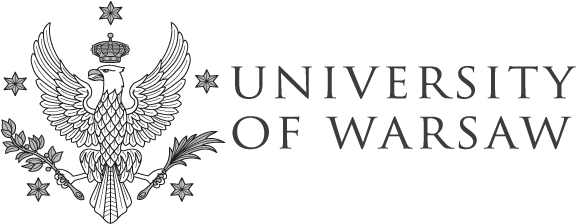Scientists from the Faculty of Physics at the University of Warsaw have investigated a novel system for quantum key distribution (QKD) that employs so-called high-dimensional encoding. Although the system proposed by the researchers is based on a phenomenon known to physicists for almost 200 years, the new solution is simpler to construct and scale than existing solutions. The research results have been published in the journals „Optica Quantum”, „Optica” and „Physical Review Applied”.
Quantum cryptography is a quantum technology that uses single photons to establish encryption keys. New research by scientists from the Faculty of Physics focuses on quantum key distribution (QKD). This solution allows the creation of a secure cryptographic key between two people.
According to Dr Michał Karpiński, head of the Quantum Photonics Laboratory at the Faculty of Physics at the University of Warsaw, quantum cryptography typically uses so-called qubits – the simplest units of quantum information.
„Although this method is well-tested, it is not always suitable for more demanding applications. Therefore, scientists are now working on so-called multidimensional coding. Instead of qubits, which measurement yields one of two outcomes, we use more complex quantum states that can take on more than one value,” says Dr Michał Karpiński.
The research is being conducted by scientists from the Quantum Photonics Laboratory at the Faculty of Physics, University of Warsaw. The team leader is Dr Michał Karpiński, who works with Maciej Ogrodnik and Adam Widomski, doctoral candidates at the Faculty of Physics at the University of Warsaw. Researchers are focusing on the superposition of photons over time.
„It has already been possible to efficiently detect superpositions composed of two pulses: an earlier one and a later one. We’ve gone a step further – we’re interested in cases where there are more of these time intervals: from two to four or more,” adds Dr Karpiński.
A well-known effect, a new application
The researchers were inspired by the Talbot effect – a phenomenon known from classical optics, first described in 1836 by Henry Fox Talbot, a pioneer of photography.
„When light passes through a diffraction grating, its image repeats at regular intervals – as if it were ‘reborn’ at a distance. Interestingly, the same effect occurs not only in space but also in time – provided that a regular sequence of light pulses propagates in a medium with the appropriate dispersion, such as a glass optical fiber,” explains Maciej Ogrodnik.
A team of scientists from the Faculty of Physics has developed an experimental four-dimensional quantum key distribution (QKD) system. Importantly, the entire system was constructed exclusively from readily available components. As Adam Widomski explains, the key innovation is the use of a single photon detector to record the superposition of multiple light pulses – instead of a complex network of interferometers. This solution significantly simplifies the device’s design, reduces its cost, and eliminates the need for time-consuming receiver calibration.
„Traditionally, when we want to detect the phase between pulses, we use a system of multiple interferometers – a sort of tree in which the pulses are divided and shifted in time. Unfortunately, such systems are inefficient because some measurement results are useless. Measurement efficiency decreases with the increasing number of pulses, and the receiver requires precise calibration and stabilization,” says Maciej Ogrodnik.
The new solution developed by researchers from the University of Warsaw avoids these problems. It uses all recorded photon detection events, resulting in significantly higher measurement efficiency. Although the method involves a slightly larger measurement error, this does not hinder the practical implementation of QKD – as confirmed in collaboration with quantum cryptography theorists. Furthermore, the system is extremely flexible: it allows for the detection of two- and four-dimensional superpositions without the need to reconfigure the system or restabilise the receiver. This is a significant step towards the development of quantum technology.
Increasing information efficiency
The researchers tested their solution on both laboratory fiber optics and the University of Warsaw’s fiber optic infrastructure, over a distance of several kilometers.
„Thanks to the new method, which utilises the temporal Talbot effect, we successfully demonstrated QKD using two- and four-dimensional coding with the same transmitter and receiver. Despite the errors inherent in the experimentally simple method, our results confirm the increased information efficiency of the system resulting from the properties of high-dimensional coding”, explains Adam Widomski.
„A more detailed analysis indicates that the current description of many QKD protocols is incomplete, which could be exploited by an attacker. Unfortunately, the method we use also has this vulnerability. We participated in the work to resolve this issue. Our colleagues noticed that a certain modification of the receiver allows for the collection of more data, thus eliminating the aforementioned vulnerability. “The proof of the new protocol’s security has been published in the journal „Physical Review Applied” and we discuss its application to our experiment in our latest article,” says Maciej Ogrodnik.
The project also allowed scientists from the Faculty of Physics to expand their knowledge of the latest photonic quantum technologies, which they are developing in the Faculty’s laboratories.
The research results were published in the prestigious journals “Optica Quantum,” “Optica,” and “Physical Review Applied”:
Maciej Ogrodnik, Adam Widomski, Dagmar Bruß, Giovanni Chesi, Federico Grasselli, Hermann Kampermann, Chiara Macchiavello, Nathan Walk, Nikolai Wyderka, Michał Karpiński, High-dimensional quantum key distribution with resource-efficient detection, „Optica Quantum”, 3, 372–380 (2025) https://doi.org/10.1364/OPTICAQ.560373
Adam Widomski, Maciej Ogrodnik, Michał Karpiński, Efficient detection of multidimensional single-photon time-bin superpositions, „Optica” 11, 926 (2024) https://doi.org/10.1364/OPTICA.503095
Federico Grasselli, Giovanni Chesi, Nathan Walk, Hermann Kampermann, Adam Widomski, Maciej Ogrodnik, Michał Karpiński, Chiara Macchiavello, Dagmar Bruß, Nikolai Wyderka, Quantum key distribution with basis-dependent detection probability, „Physical Review Applied 23, 044011 (2025), https://doi.org/10.1103/PhysRevApplied.23.044011




